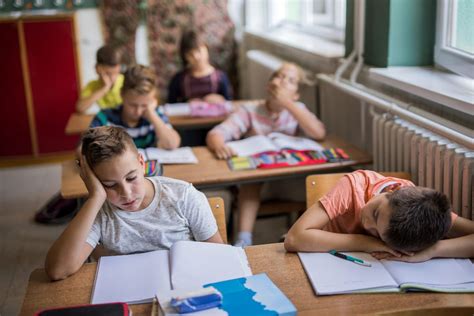Introduction
Sleep deprivation among students has reached epidemic proportions, affecting their academic performance, health, and overall well-being. The National Sleep Foundation estimates that 45% of students aged 12 to 18 get less than the recommended 8-10 hours of sleep per night. This alarming statistic has sparked widespread concern among educators, parents, and healthcare professionals.

Causes of Student Sleep Deprivation
The causes of student sleep deprivation are multifaceted, including:
- Academic Pressure: Rigorous academic schedules, excessive homework, and impending exams create immense stress on students, leading to sleep disturbances.
- Technology Use: The ubiquitous presence of smartphones, tablets, and laptops exposes students to blue light emissions, which suppress melatonin production and interfere with sleep.
- Circadian Rhythm Disruptions: Irregular sleep-wake cycles, such as late nights spent studying or socializing, disrupt the natural circadian rhythm, making it difficult to fall asleep and stay asleep.
- Lifestyle Factors: Poor nutrition, lack of exercise, and substance use can further exacerbate sleep problems.
Consequences of Student Sleep Deprivation
Sleep deprivation can have devastating consequences for students, including:
- Reduced Academic Performance: Studies have consistently shown that students who get less sleep perform worse academically. They exhibit lower attention, concentration, and memory, leading to decreased grades and overall academic success.
- Increased Risk of Mental Health Issues: Sleep deprivation can contribute to anxiety, depression, and other mental health conditions. Students who experience chronic sleep loss are more likely to report symptoms such as irritability, mood swings, and difficulty controlling their emotions.
- Physical Health Problems: Sleep deprivation weakens the immune system, increasing students’ susceptibility to illnesses such as colds and flu. It can also increase the risk of obesity, cardiovascular disease, and diabetes.
Addressing Student Sleep Deprivation
Addressing the epidemic of student sleep deprivation requires a comprehensive approach involving multiple stakeholders.
Educators
- Implement flexible deadlines for assignments and exams.
- Reduce homework load and promote effective time management skills.
- Create a sleep-friendly classroom environment with comfortable seating and dim lighting.
- Educate students about the importance of sleep and encourage healthy sleep habits.
Parents
- Establish regular bedtimes and wake-up times, even on weekends.
- Create a conducive environment for sleep with a dark, quiet, and cool bedroom.
- Limit screen time before bedtime and encourage relaxing activities before sleep.
- Talk to your children about their sleep patterns and any concerns they may have.
Healthcare Professionals
- Screen students for sleep disorders such as insomnia, sleep apnea, and narcolepsy.
- Provide evidence-based interventions, such as cognitive behavioral therapy for insomnia, to improve sleep quality.
- Collaborate with schools and parents to develop comprehensive sleep education programs.
Students
- Prioritize sleep and make getting enough sleep a non-negotiable part of your schedule.
- Establish a regular sleep-wake cycle, even on weekends.
- Create a relaxing bedtime routine and stick to it.
- Avoid caffeine and alcohol before bedtime.
- Seek help if you have any concerns about your sleep.
Conclusion
Student sleep deprivation is a serious problem with far-reaching consequences. It is imperative that we work together as educators, parents, healthcare professionals, and students to address the causes and mitigate the effects of this epidemic. By promoting healthy sleep habits and creating a supportive environment, we can empower students to thrive academically, socially, and physically.
